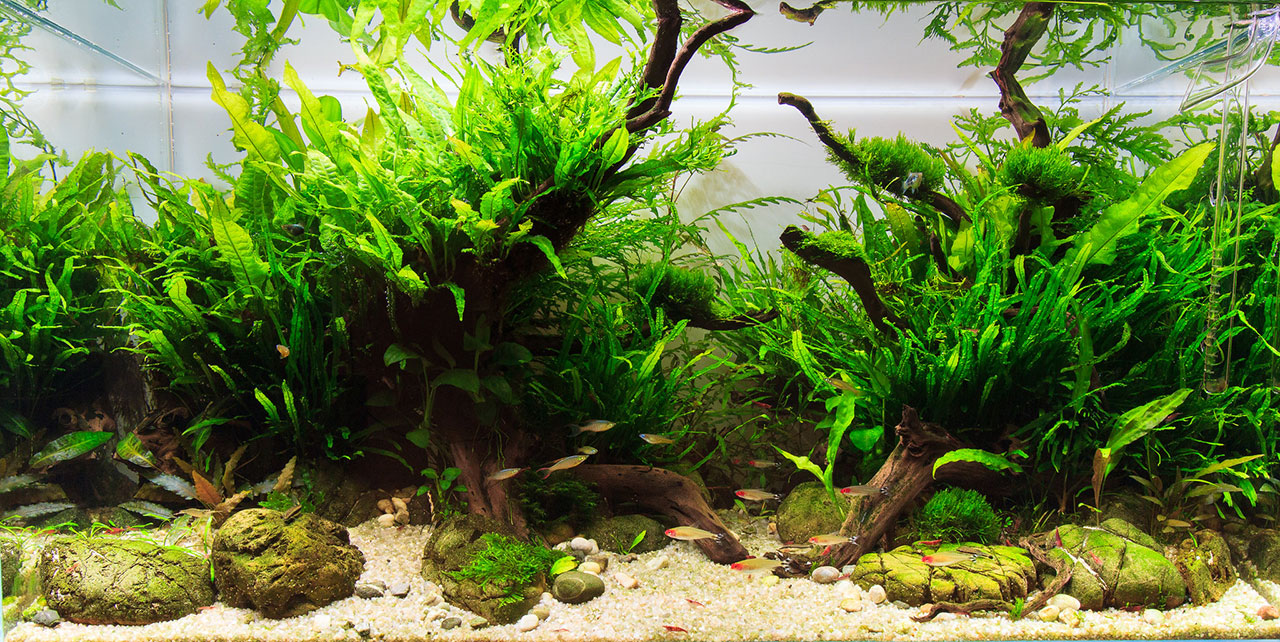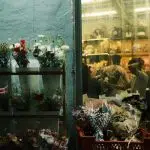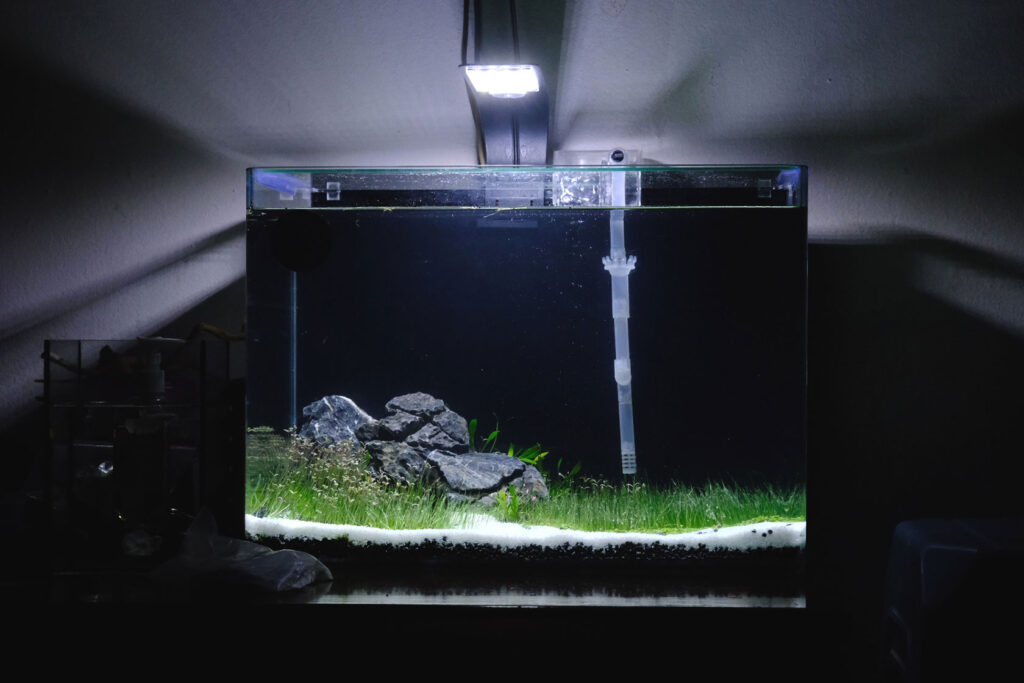If you’re new to the fishkeeping hobby and are looking for a low budget option, then the aquascape fish tank might be perfect for you. In this low budget aquascape fish tank tutorial for beginner aquascape, we’ll discuss how to make your own planted tank, including the hardscape, plants, tools, and material required. First, you need to decide what kind of setup you want. Aquascaping can really be broken down into two categories: low-maintenance and high-maintenance. High-maintenance setups require much more work than a low-maintenance setup.
You can go for a low budget aquascaping project and start with the most basic and small size tank. In a low-maintenance setup, you’ll only need to clean the water once a week and feed the fish once a day. On the other hand, in a high-maintenance setup, you’ll need to do weekly water changes, feed the fish every 2-3 days, and clean the tank often.
The design of the aquarium is often considered the most important aspect of an aquascape design. A variety of aquarium decorations have been created for aquascaping purposes, including rocks, wood, and soil. The choice of material is often determined by the desired end result.
Here are some of the topics we will be discussing below:
1. Aquarium Hardscape: Seiryu Aquarium Rocks and Wood
Aquascaping is the art of arranging aquatic plants and other materials in a decorative way to create an artificial aquarium landscape. Hardscape is an important part of any tank, as it provides a sense of structure and can act as a focal point within the tank. Aquascaping is a form of decorative aquatic gardening that uses live plants to create an artificial aquarium landscape. It is a type of hydroponics.
You can use hardscape aquarium rocks and stones to create a water feature or a waterfall, on creativity. It can be used to create a cave-like effect, adding a natural appearance. There are many ways to arrange a hardscape, but there are some key principles that should be considered when designing your hardscape.
Wood is a growing trend in the aquascaping community, which uses wood to create the overall design of the aquascape. Driftwood is a popular choice of wood, but you can use any type of wood. It can be a great accent to an aquascape, adding structure, as well as a focal point. Driftwood is often used in combination with other types of materials such as rocks and pebbles.
An example of rocks that can be used in an hardscaping project is the seiryu aquarium rock. This type of rock is used to create a cave-like effect. It can be used with rocks, stones, pebbles, branches, and other items to create the desired design of the aquascape.
2. Planting the Tank
There are three different types of aquatic plants you can use to create a beautiful aquatic landscape: foreground, midground, and background. Background plants are usually found in the back of the tank, filling in the background space. You can use both foreground and midground plants together to create a beautiful aquascape.
Foreground plants are the ones you see right away at the front of the tank, like Java ferns and Anubias nana. These plants are used to hide the tank’s background and give the aquarium a more natural appearance. Midground plants are in the middle of the tank, usually occupying most of the back half and hiding the foreground plants.
The roots of the plants are attached to the substrate and hang down into the water, providing oxygen and nutrients to the plant. Some examples of plants include; Vallisneria, Cryptocoryne, Amazon Sword, Water Wisteria, Brazilian Sword, and Hornwort.
The lifespan of aquatic plants depends on the species of plant and the conditions in which they are kept. However, most aquatic plants will live for approximately 4 to 5 years and some much longer.
3. Choosing Substrate For Aquatic Plants
The substrate is the material used to cover the bottom of an aquarium. The substrate can be either gravel, sand, or a mix of both. All of these substrates have their benefits and disadvantages.
Gravel offers durability and support to the aquatic plants, while sand has the ability to hold water and is better for absorbing nutrients. The durability of gravel makes it a good choice for aquascaping, or designing the look of the aquarium.
Sand, on the other hand, is not as good at holding water. This can be a problem for plants that are intended to thrive in high humidity. Some aquarists have found success with using a mix of both gravel and sand.
4. Aquarium Filtration
Aquarium filtration is the process of removing contaminants from the water. There are two primary types of filtration systems: mechanical and biological. The purpose of a mechanical filtration system is to remove large objects (such as rocks and dead plants) that can clog up the aquarium’s intake, while biological filtration is used to clean the water of organic pollutants such as algae and detritus.
When choosing a filtration system, it is important to consider the size of the tank and the type of filtration system needed. The more filtration system one chooses, the more efficient the filtration will be.
For most basic setup, a small water filter is sufficient for small tanks. The aquarium air pump is used to inflate the aquarium with air, in order to keep the aquarium at a certain level of water.
5. Aquascaping Tools and Accessories
Many people are drawn to the idea of building a budget planted fish tank. Building an aquascape fish tank can be an exercise in creativity and patience. The following list of tools and accessories will help you get started in your hardscape venture.
Lighting
Many aquarists rely on the use of artificial lighting to grow their plants. This can be done with lamps or LED lights. LED lighting is more efficient in terms of electricity usage and less heat is produced than that of other types of lighting.
They are also very portable and can be attached to the side of the tank. Low-wattage fluorescent lights are also available for use in aquascaping. There are many different types of gravel available on the market today that will suit the type of aquarium being created.
Planting tools
The aquarium planting tool makes planting a lot easier. It enables the aquarist to place plants in the fish tank very quickly. The tool is used by holding the plant in one hand and gripping the stem with the other hand. The tool can be used to gently bend the stems of the plants or to lift the plant off the substrate.
Aquarium Vacuum / Siphon
The aquarium vacuum or siphon is used to remove water. It is necessary for removing a lot of water in order to create a waterfall, which aids in aeration and oxygenation.
Aquarium Thermometer
The aquarium thermometer is used to check the temperature of the water. It is useful for keeping track of the temperature of the water and can be used as a measuring tool, which can also be used to keep track of the salinity of the water.
Water Testing Kits
Water testing kits are used to test the quality of the water in the aquarium. They can also be used to test the quality of tap water. These kits are designed to be placed directly into the aquarium and provide information about the quality of the water.
Testing the water quality can prevent harm to the fishes, shrimp, and plants. Water Testing Kits come in several different forms. There are some that can be used for testing the pH and other types that are designed to test the quality of the water.
6. Let’s Build A Low Budget Aquascape Fish Tank
Before you start, you need to plan the layout of your aquarium. Choose a tank that is large enough to hold the number of plants and fish you plan to keep in it. Prefer a 40-liter aquarium tank. You will need to find some seiryu aquarium rock and Malaysian driftwoods for the hardscape. Most of the woods sold online are chosen randomly. You can visit any local aquarium shops nearby to choose the one you like.
Next, you will need to choose the substrate for the tank. We suggest getting ADA aqua soil which is a good choice for planted aquariums. ADA has the best quality as well as a good price.
After that, you will need to choose the plants for your aquascape fish tank. Remember to make sure that all your plants are placed in the tank evenly. You can use stones, rocks or some other materials to create an uneven surface.
You will see many kinds of planted aquariums. Most of the plants are available online or purchase at a local aquarium shop. Choose the ones you like and place them into your tank. I may earn a small commission when readers purchase products through the links below.
- Get a nano tank or 40 liter aquarium tank – Buy on Shopee MY / Buy on Amazon US
- Add ADA Aqua soil – Buy on Shopee MY / Buy on Amazon US
- Add some seiryu aquarium rocks, stones and driftwoods
- Add the plants
- Add water
- Add filter – Buy on Shopee MY / Buy on Amazon US
- Let the it complete its first cycle
- Add the fish
7. Conclusion
Now you already learn how to build a budget aquascape fish tank. You can build a little or large tank. Some people like to add more plants to make the aquarium landscape look more beautiful and luxurious. You can choose the plants that are not too expensive but still worth the money.
You can choose any fish including betta, guppy, shrimp, snail, and so on. Do check out my betta aquarium setup if you would like to have a betta in your tank.
It is your choice to decide how you want to decorate your fish tank. You need to arrange the hardscape first before adding the plants. While staying safe at home, probably you have found a new hobby now. You can also join the aquascaping community for discussion and find out how they built their aquascape fish tank.
Happy aquascaping!










